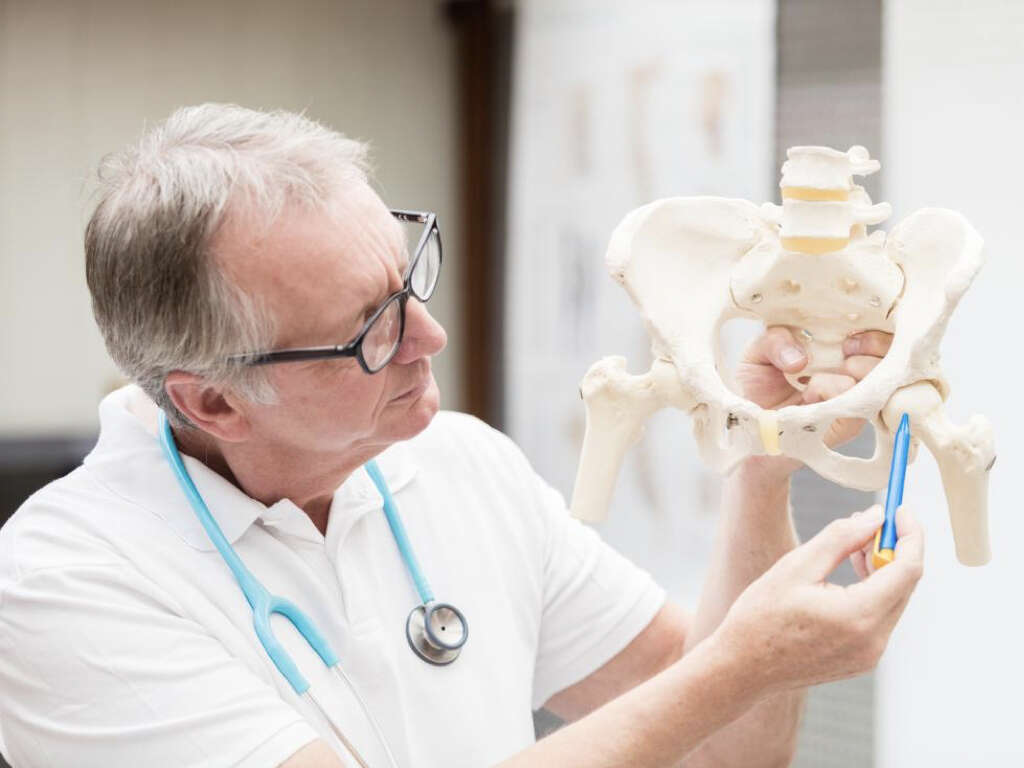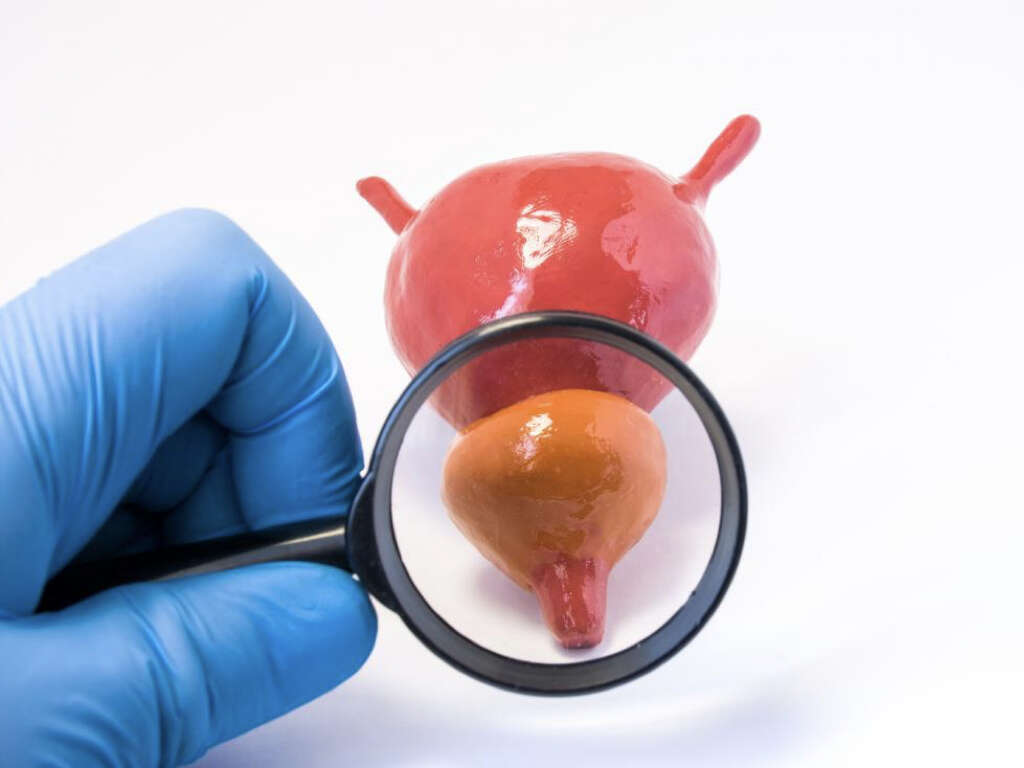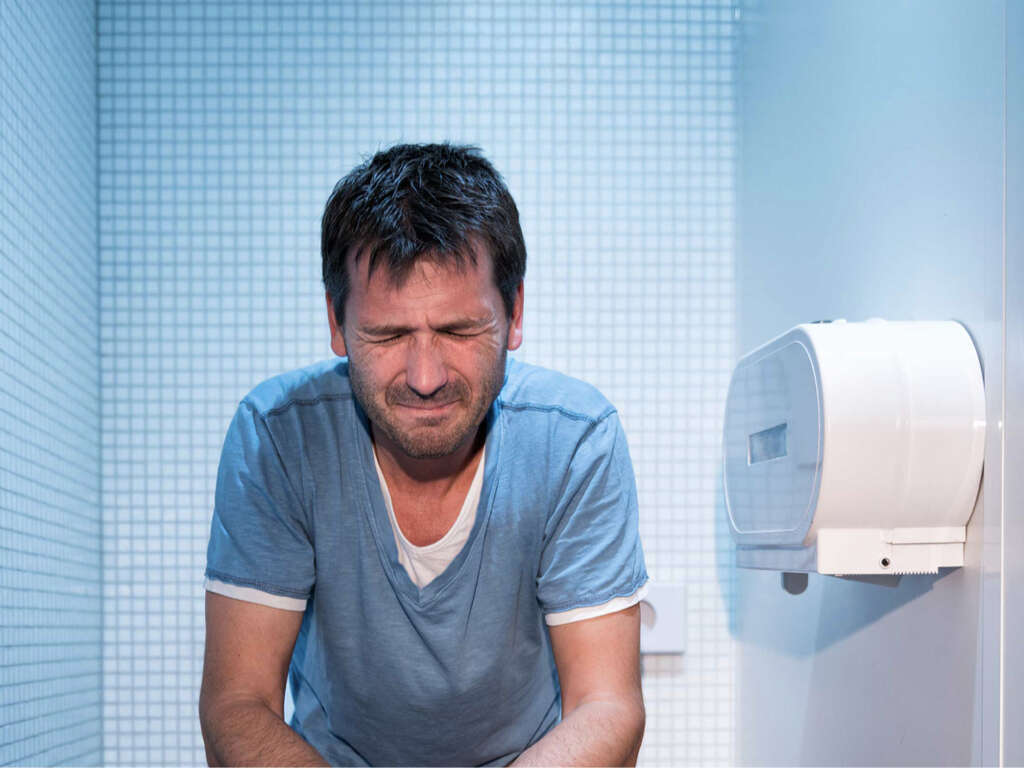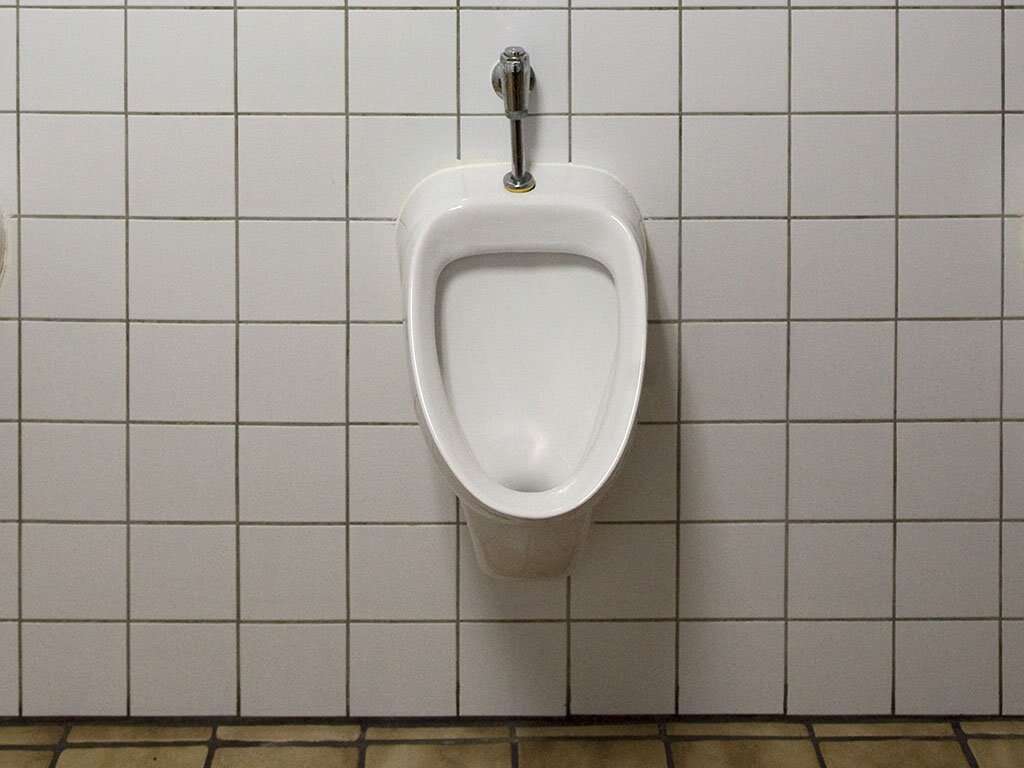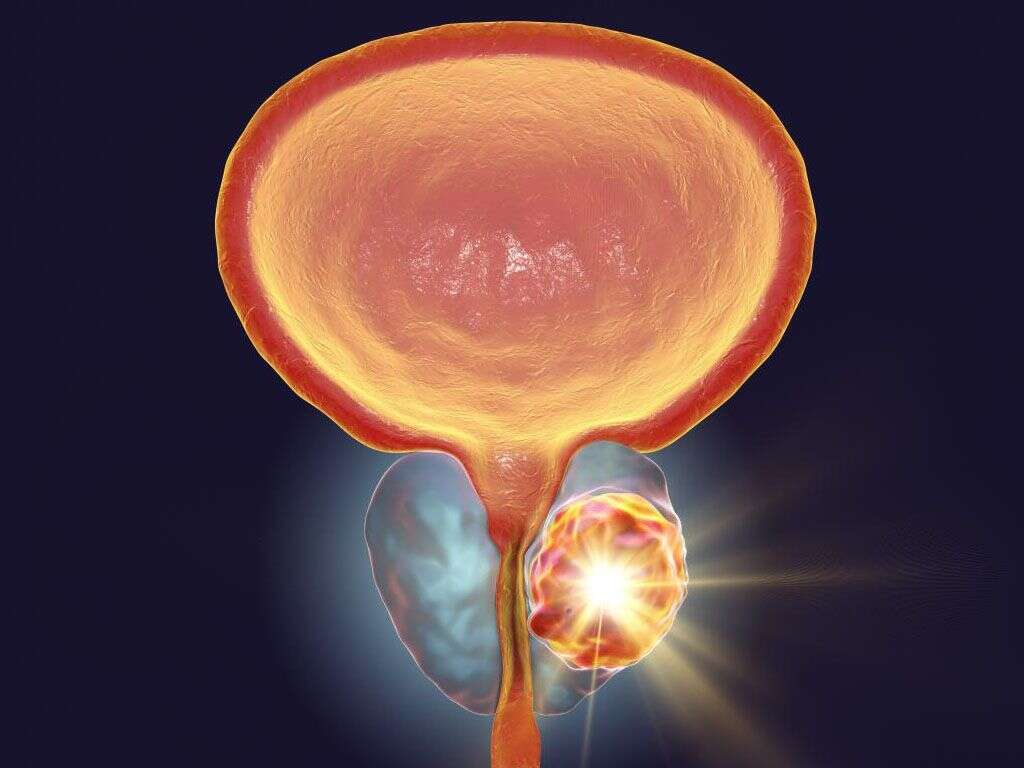What Is BPH?
BPH (benign prostatic hyperplasia) is a common condition among males and constitutes a normal part of aging for most. BPH is a histologic term used to describe the proliferation of the cells that make up the prostate, which ultimately will depend on the production of certain hormones. This process results in the enlargement of the gland, and as its name describes, this enlargement is benign or noncancerous.
It is estimated that about 50% of men may have BPH (at the cellular level) by the age of sixty, while the number increases to 90% by the age of 85 years old. Moreover, symptoms of BPH usually involve the lower urinary tract. Finally, there a several tests that aid in the diagnosis of BPH. Continue reading this article if you want to know more about benign prostatic hyperplasia.
1. Anatomy
The prostate is a gland in the male reproductive system that contributes to 30% of the semen by secreting an alkaline and whitish fluid. This fluid works to neutralize vaginal acidity, prolonging the lifespan of the sperm.
A thorough description of prostatic anatomy is crucial for a better understanding of the symptoms of BPH, as well as the specific tests used for diagnosis. The prostate is located in front of the rectum and distal to the urinary bladder. Moreover, it is traversed by a part of the urethra (prostatic urethra), which is the tube that carries urine from the bladder to the exterior of the body. Interestingly, the male urethra can be divided into an uppermost segment (prostatic urethra), a middle segment within the urethral sphincter (membranous urethra), and a lowermost segment within the penis (spongy urethra). Similarly, the prostate can be divided by lobes or zones. Specifically, there is a zone, located in the center of the gland, that surrounds the prostatic urethra (transition zone). BPH most commonly arises in the transition zone, which explains why in most patients with this condition, the urinary flow can be restricted in the early stages of BPH.
In contrast, prostate cancer most commonly arises in the peripheral zone of the gland (70% of cases), which means that, unlike BPH, it does not cause urinary symptoms at an early stage of the disease. In fact, most patients with prostate cancer will remain asymptomatic until advanced disease. Consequently, early screening for prostate cancer is of utmost importance.
2. Mechanism
Prostatic enlargement occurs due to the actions of dihydrotestosterone (DHT) hormone, along with other unknown etiologic factors. Circulating testosterone is metabolized into DHT, by a prostatic enzyme known as 5-alpha-reductase. Subsequently, DHT acts on the nucleus of prostatic cells, possibly causing BPH.
In BPH, the median and lateral lobes are generally enlarged due to their high glandular composition. Most of the growth occurs in the transition zone of the prostate. As mentioned before, the enlargement of the prostate gland may cause urinary symptoms as it restricts the urinary flow through the urethra. Additionally, in BPH, the bladder wall can become thickened and weak, losing its ability to empty completely. Thus, the amount of urine left in the bladder after urination may increase (residual urine volume), possibly leading to the inability to voluntarily pass urine (acute or chronic urinary retention).
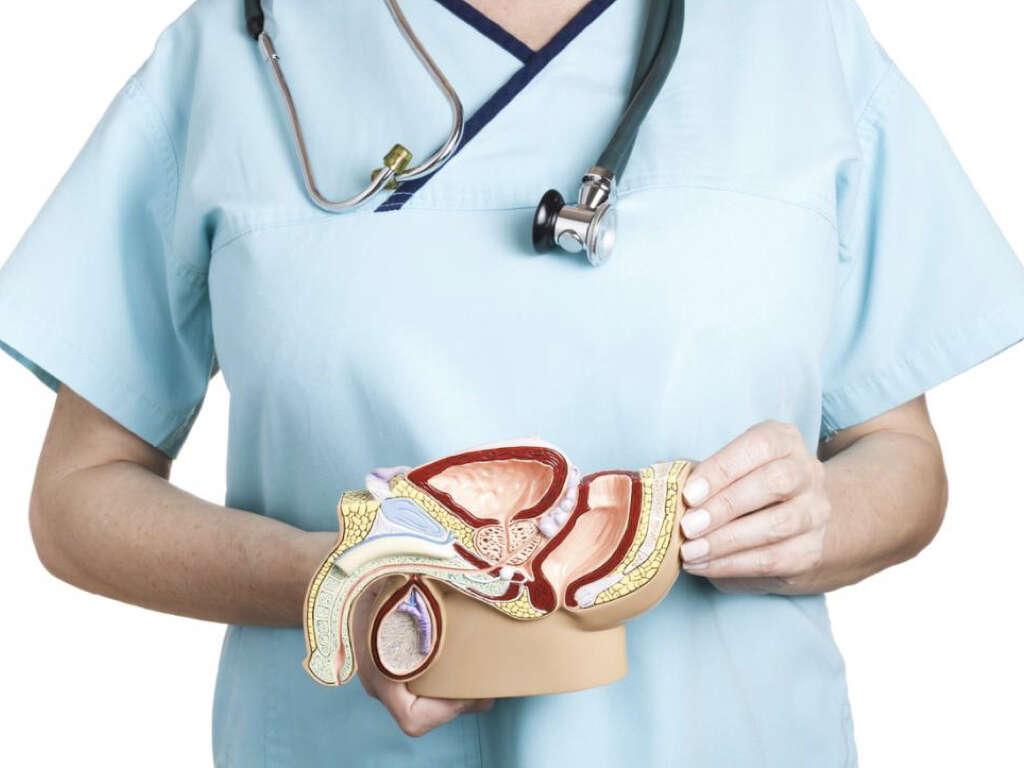
3. Statistics
BPH is a common condition that has been estimated to affect the quality of life in 33% of men who are above the age of 50. By the age of 85 years old, BPH may be present in up to 90% of men. In the United States, clinical BPH affects as many as 14 million men; while globally, it affects approximately 30 million men. Although the prevalence of BPH among African American men and Caucasian men are similar, the condition is generally more severe and progressive in African American men.
This has been postulated to be due to the higher testosterone levels, androgen receptor expression, 5-alpha-reductase activity, and growth factor activity. This increased activity results in a higher rate of prostate hyperplasia and enlargement of the gland.
4. Signs and Symptoms
BPH causes lower urinary tract symptoms (LUTS), that can be categorized into storage or voiding symptoms. The storage or irritative symptoms in BPH include nocturia (waking up at night to urinate), increased urinary frequency, urinary urgency, and urge incontinence (leakage of urine after a strong sudden need to urinate).
Voiding or obstructive symptoms include urinary hesitancy (the need to wait a while before the urinary flow begins), the sensation of straining for voiding, poor and/ or intermittent stream, prolongation of voiding, and leaking after urination (dribbling). Finally, there may also be pain during urination (dysuria).

5. Diagnosis and Investigations
Some of the relevant tests for BPH include urinalysis, urine culture, prostate-specific antigen (PSA) levels, electrolytes, BUN, and creatinine levels. Furthermore, imaging studies like ultrasonography can be used to determine the size of the bladder and the characteristics of the prostate, as well as the presence of hydronephrosis (dilation of the kidneys due to backflow of the urine).
Transrectal ultrasound may be recommended for some patients. Other imaging such as computed tomography (CT) scan and magnetic resonance imaging (MRI) is generally not required.
6. American Urological Association (AUA) Guidelines
The AUA has developed guidelines for the diagnosis and treatment of BPH. These guidelines were based on the 1994 guidelines and updated in 2006 and 2010, with confirmation of their validity in 2014.
According to these guidelines, the patient’s medical history should be taken to assess the voiding dysfunction. Then, a physical examination should include a neurologic examination and digital rectal examination (DRE) to evaluate the prostate. DRE is used to evaluate the size and outline of the gland. Additionally, note that, in most cases, possible malignancies will appear in the peripheral zones of the gland; thus they can be detected through DRE. Furthermore, patients who have agreed to prostate cancer screening can also undergo PSA testing. This test is recommended for men above 50 years of age, and men above 45 years at high risk for developing prostate cancer. Finally, there is also an International Prostate Symptom Score, based on questions concerning BPH symptoms, that aids physicians in determining the severity of BPH.

7. Optional Tests
One of the optional tests includes urine flow rate measurement that may be useful to assess the response to treatment. It can be performed before the start of treatment to establish a baseline for comparison after treatment has been initiated. Also, to gauge the severity of bladder involvement, a post-void residual (PVR) urine volume can be performed. Furthermore, urodynamic studies can be performed to distinguish between outlet obstruction and poor bladder contraction.
Finally, cystoscopy may be required for patients suspected of malignancy, foreign body, or scheduled for invasive treatment. It can also be used for those with a history of a sexually transmitted disease, trauma, or prolonged catheterization. The cystoscopy helps to rule out other causes of bladder outlet obstruction.
8. Medical Care
Watchful waiting is recommended for BPH patients who are not bothered by their symptoms as treatment is unlikely to improve their quality of life. Since metabolic syndrome has been associated with more severe BPH, it may be possible to delay the progression of the disease by decreasing blood glucose, inflammation, and improving insulin resistance. This can be done through clinical treatment and healthier lifestyle choices.
Some of the medications that can be used for BPH include selective or nonselective alpha-blockers. These drugs act on receptors located in the smooth muscle of the structures compromised by BPH; thus, promoting muscle relaxation and improving the flow of urine. Also, 5-alpha-reductase inhibitors (i.e. finasteride) can be prescribed to reduce the risk of urinary retention and improve lower urinary tract symptoms. These drugs are essentially used to reduce prostate volume. Other potentially beneficial medication includes phosphodiesterase-5 enzyme inhibitors, anticholinergic agents, and phytotherapeutic agents.

9. Transurethral Resection of the Prostate
Transurethral resection of the prostate (TURP) is a surgical intervention to relieve bladder outlet obstruction caused by BPH. It is indicated for patients with urinary retention, recurrent urinary tract infections, recurrent gross hematuria (visible blood in the urine), and renal insufficiency due to obstruction.
TURP is also indicated when the patients do not improve from medical therapy or no longer wish or are no longer able to continue medical therapy. TURP is performed using general or regional anesthesia and involves entering an instrument through the urethra to access the prostate. It involves a high-energy electrical cutting current to shave away at the prostatic tissue. Like any surgical procedure, TURP has its risks. This procedure may cause partial resection of the urinary sphincteric mechanism, which can result in retrograde ejaculation. As the name suggests, in this disease the patient’s ejaculate goes back into the bladder, instead of through the penis.
Another minimally invasive treatment is also available to reduce the risk of adverse effects. It includes lasers, transurethral incision of the prostate, transurethral microwave therapy, transurethral needle ablation of the prostate, and high-intensity ultrasound energy therapy.
10. Prognosis and Patient Education
BPH can cause bladder outlet obstruction, which can result in complications such as renal failure, uremia (accumulation of urea in the blood), gross hematuria (blood in the urine), urinary retention (retention of urine in the bladder due to obstruction of the urethra caused by prostate enlargement), bladder calculi (stones in the bladder), recurrent urinary tract infections, and renal insufficiency (decreased function of the kidneys).
Since BPH is a common condition, men should be made aware regarding the signs and symptoms they should look out for, especially when they are above the age of 50. This is important as symptoms may become progressively worse and if left untreated, the obstruction of the bladder can negatively affect the kidney function.



